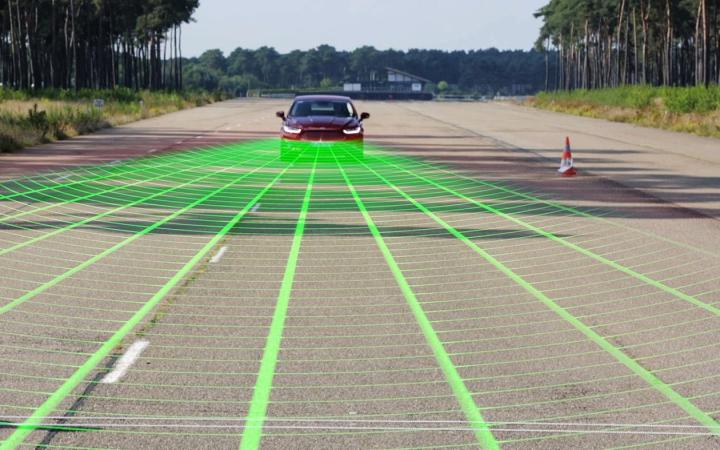
Collision-mitigation systems are proliferating throughout the car industry, and now the Blue Oval is jumping on the bandwagon with its own “Pre-Collision Assist with Pedestrian Detection” tech, which uses sensors to scan the road ahead and “see” obstacles.
The system uses a combination of radar and a windshield-mounted camera to detect obstacles. It then warns the driver of an impending collision, and can apply full braking force to slow or stop the car.
Ford didn’t say if there was any speed limit for the braking feature, but systems from other carmakers generally work only at low speeds, usually below 30 mph.
Augmenting radar with a camera likely lowered the cost of this system, but forward-facing cameras don’t always work in harsh lighting or low-visibility conditions. Indeed, Ford notes that lighting and weather can affect performance.
Related: 2015 Ford Mustang EcoBoost loses credibility with fake engine sounds
The pedestrian-detection feature takes images from the radar sensor and camera, and compares them to a database of “pedestrian shapes” to distinguish people from objects.
If the system detects a pedestrian in the car’s path, it will first provide audible and visible warnings to the driver. It will then prime the brakes by reducing the distance between the brake pads and rotors. If the driver takes no action, the brakes are automatically applied.
Both the pre-collision and pedestrian-detection features will launch on the 2015 Ford Mondeo – the Fusion’s European twin – before the end of the year. It’ll then roll out on other global Ford and Lincoln models.
The Ford system doesn’t really offer anything not available on competitive products like Subaru’s EyeSight, but the Dearborn company needs some sophisticated safety tech of its now just maintain parity with other carmakers.
Editors' Recommendations
- Don’t let the gimmicks fool you. The Ioniq 5 N is a serious track car
- Ford recalls nearly 1.9 million Explorer SUVs over safety issue
- Ford Mustang Mach-E Rally kicks up some dirt
- The best electric cars you can buy in 2023
- Ford EV drivers can use 12,000 Tesla Superchargers starting in 2024


